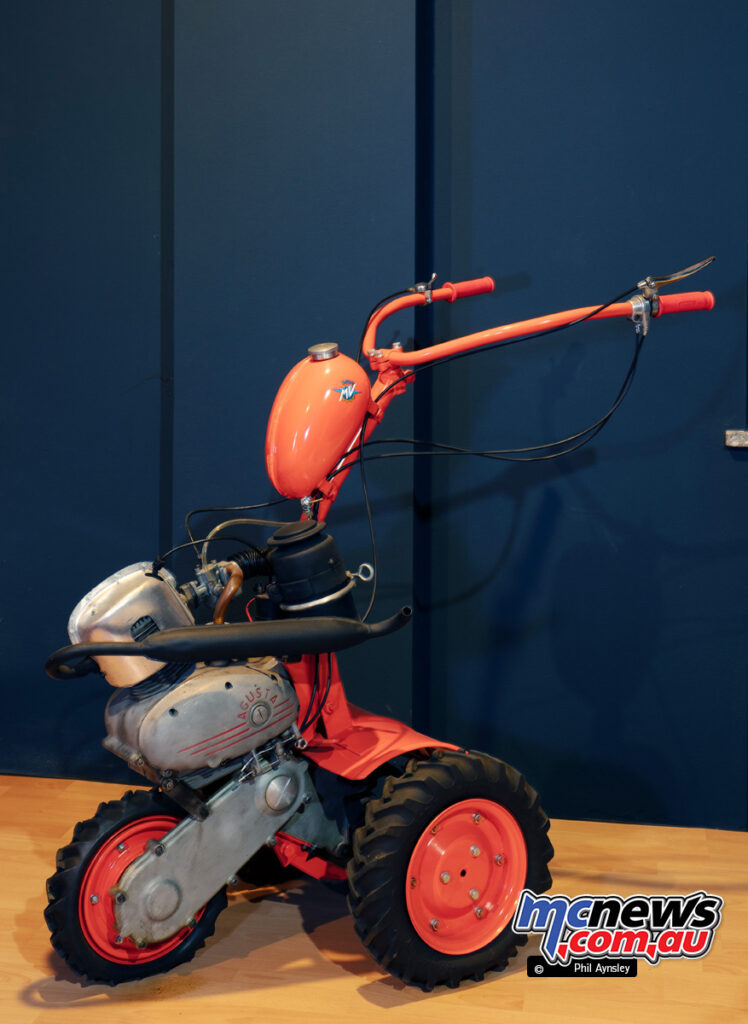The MV Agusta Museum in Cascina Costa
With Phil Aynsley
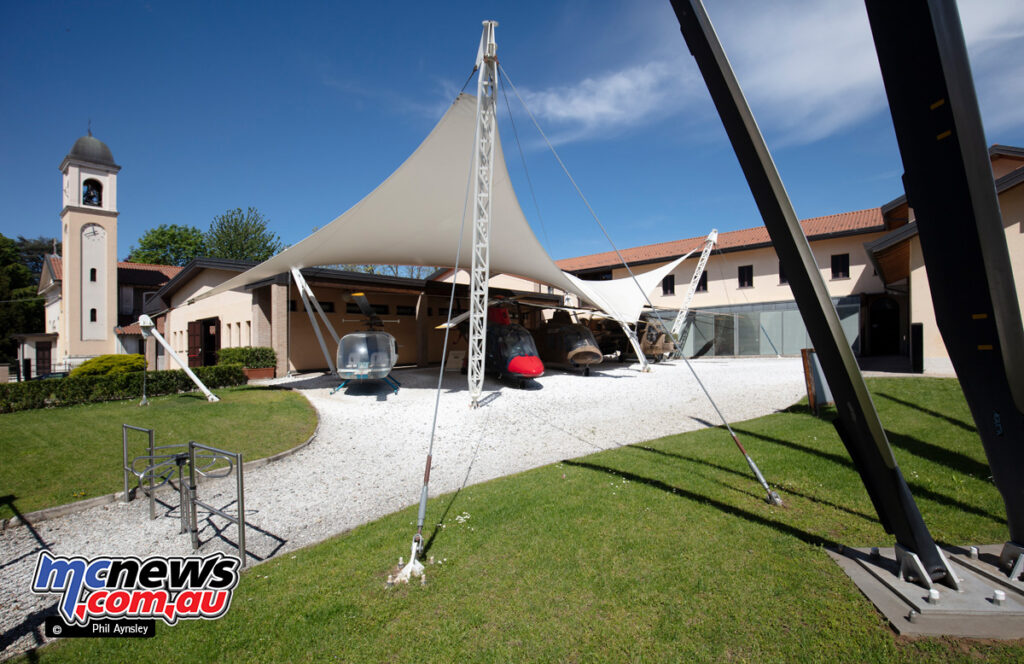
The museum building is located next to Milan’s Malpensa airport in Cascina Costa, where Giovanni Agusta moved his aircraft manufacturing business in 1923. Both the company’s aeronautical and motorcycle history are on display.
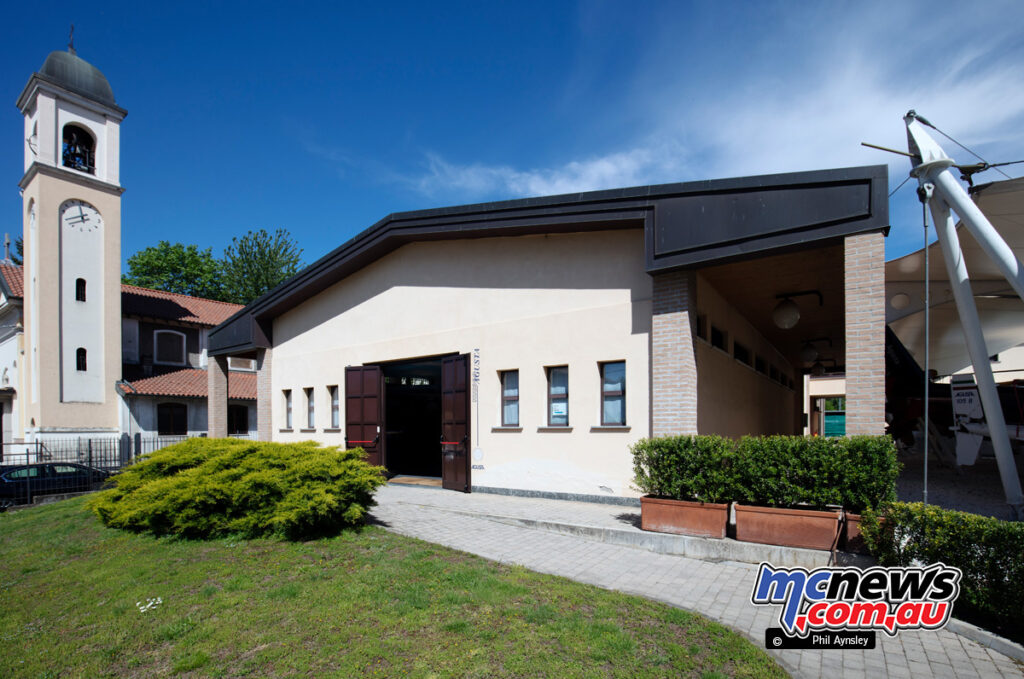
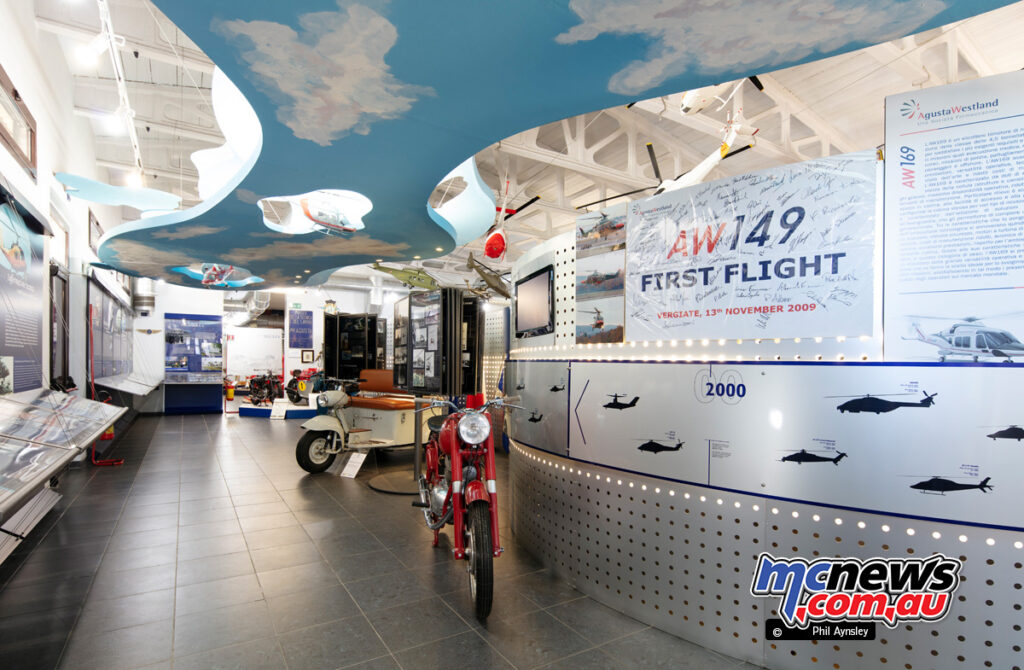
The name MV Agusta rarely brings scooters to mind but the company produced tens of thousands from 1949 up until 1964.
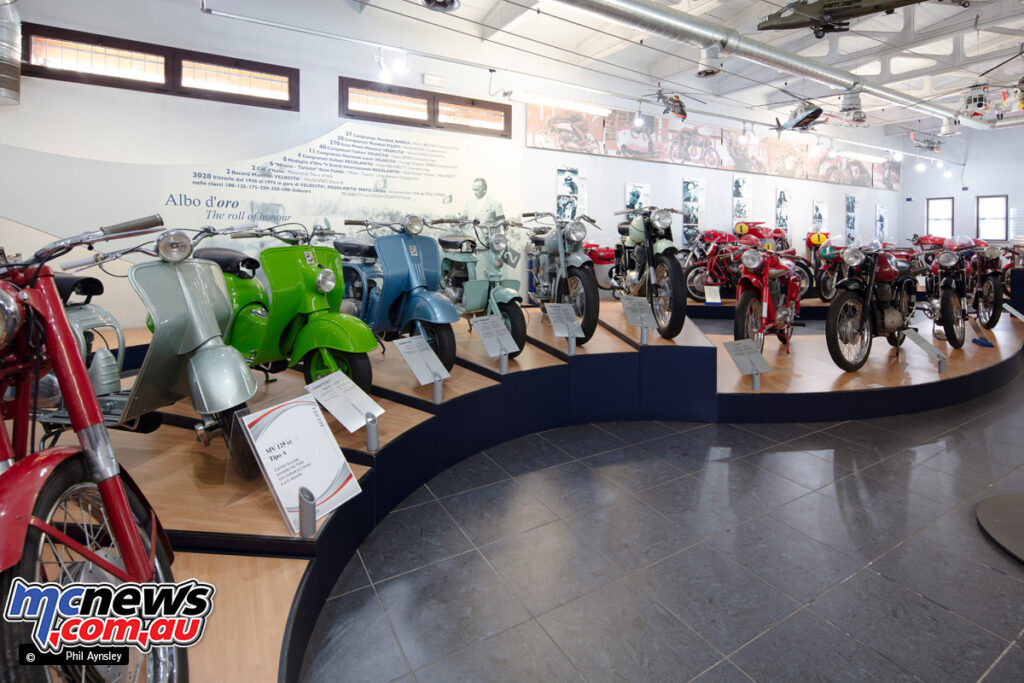
A distinctive feature of most of their scooters was that the motors were exposed, not enclosed like nearly all other scooters. The final model, the 150 Chicco did use an enclosing pressed steel monocoque chassis together with a bespoke engine.
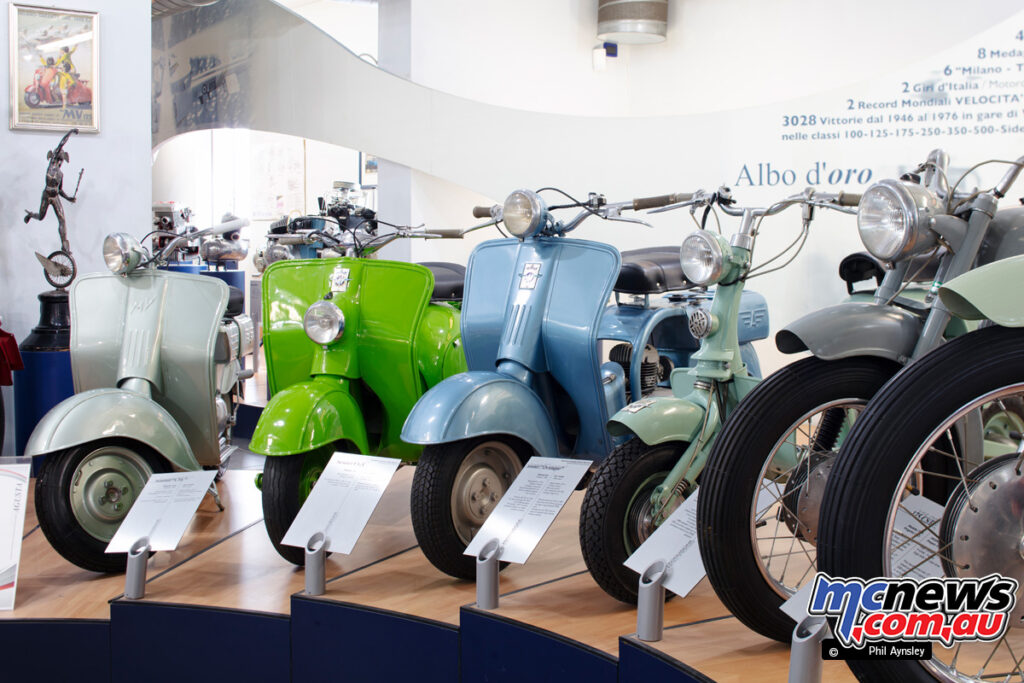
A cut away view of a motor from the 1975 750S America. The motor was a slightly modified version of the 1972 750 Sport (which in turn was based on the 600 Four).
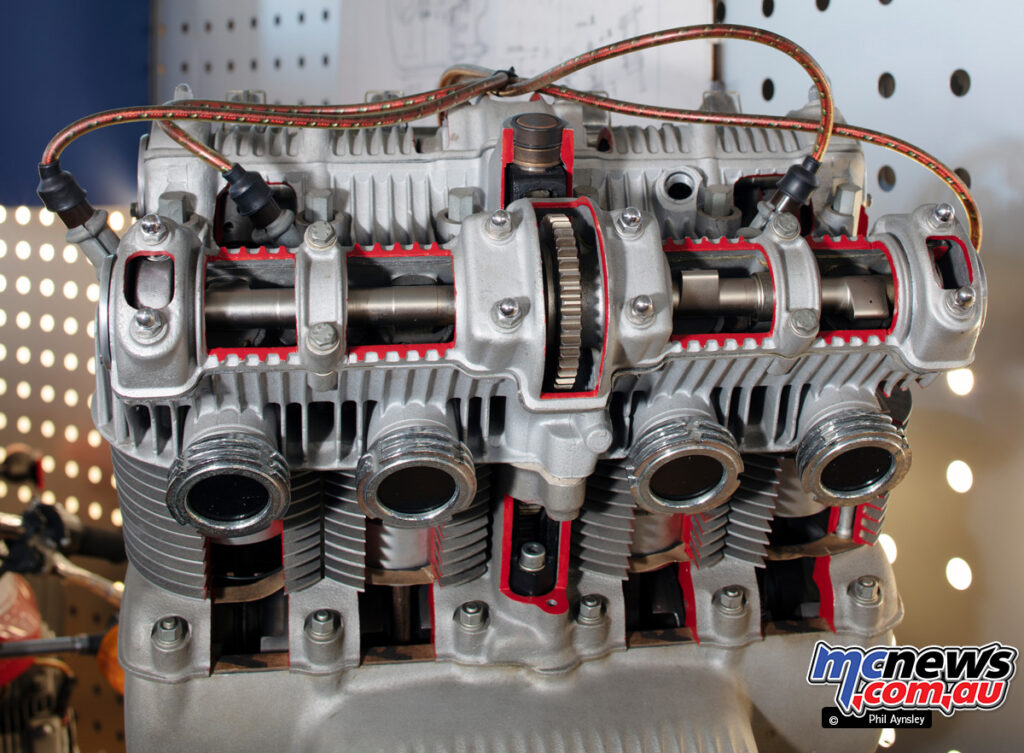
The bore was increased by 2 mm resulting in a capacity of 789 cc, compression increased, reworked heads housed larger valves but milder cams. 26 mm VHB Dell’Orto carbs replaced the earlier UB 24mm units and power was 75 hp at 8,500 rpm.
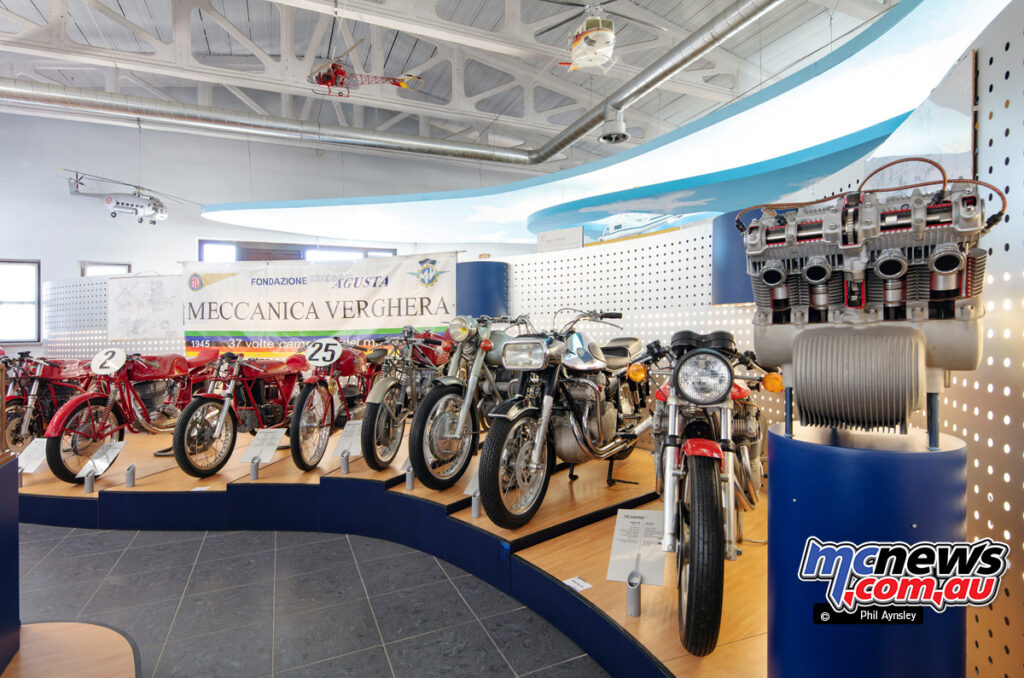
A museum visit really is a must for anyone interested in motorcycles – particularly red ones!
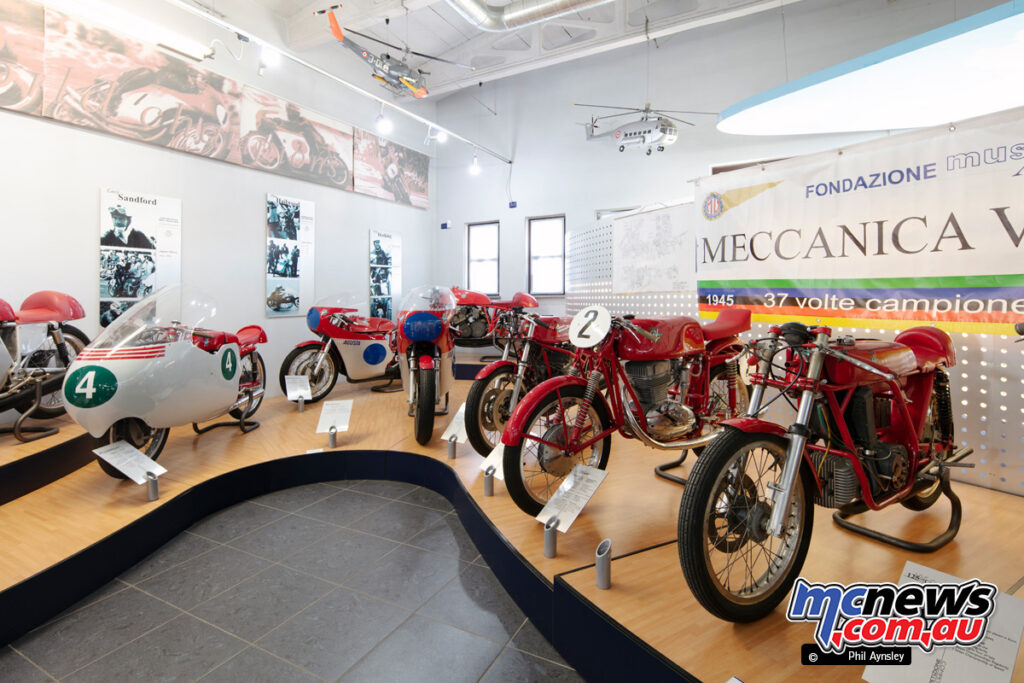
When Piero Remor moved from Gilera to MV Agusta in 1949 he began work on a DOHC 500/4. This bore a very close resemblance to his Gilera design and had some strange design features such as seperate gear levers on each side for up/down changes.
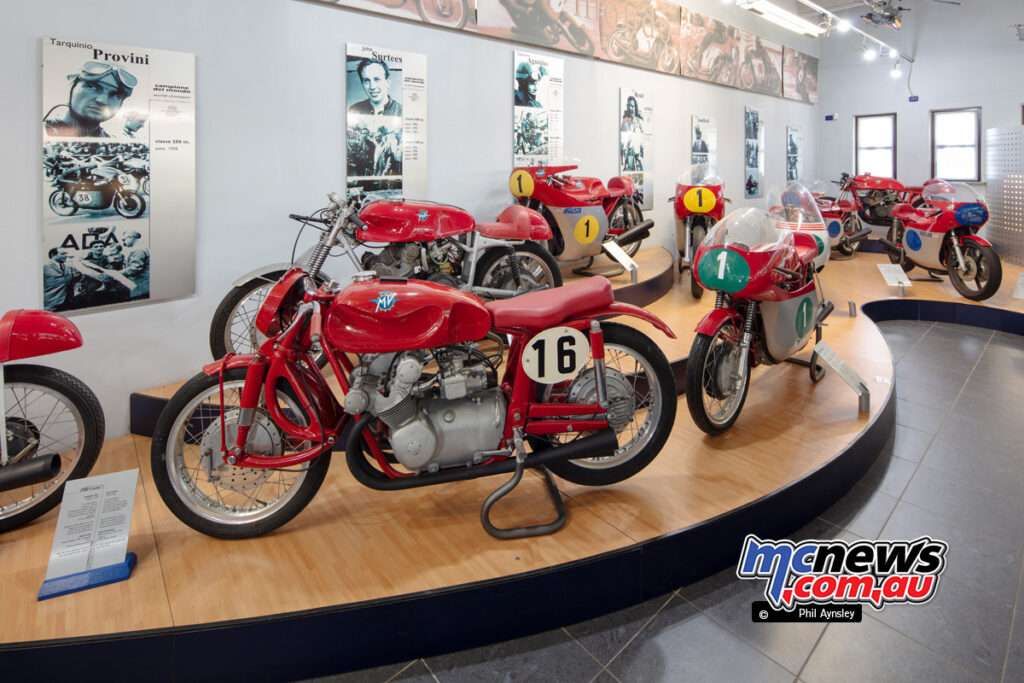
It first raced the following year. This 1951 version had a conventional gearshift but retained the Earls fork and twin carburettors mounted on Y-shaped manifolds.
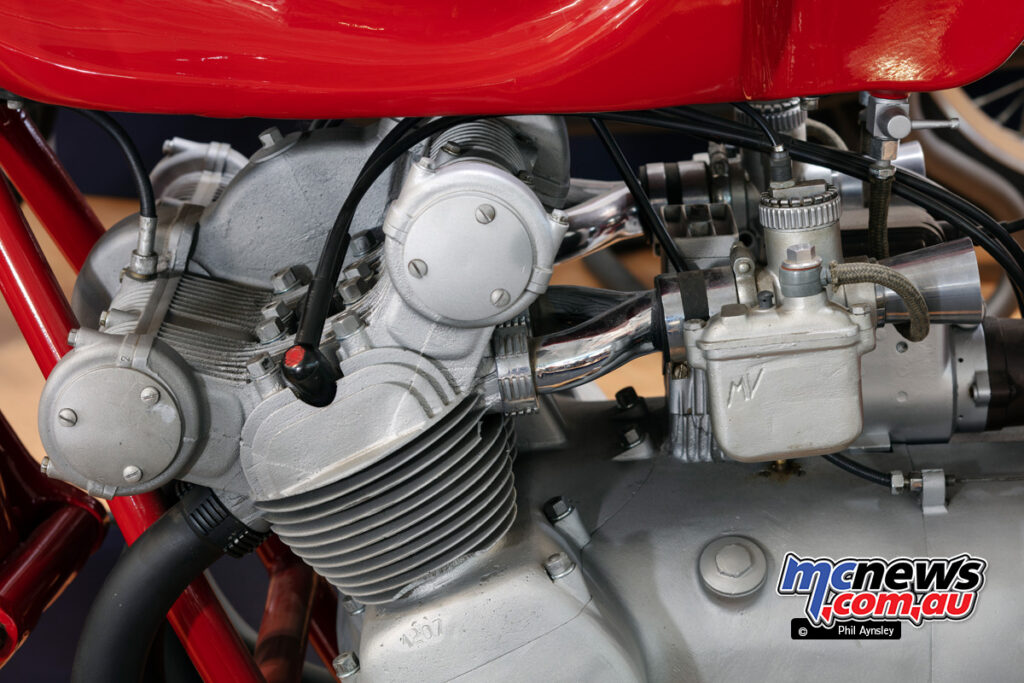
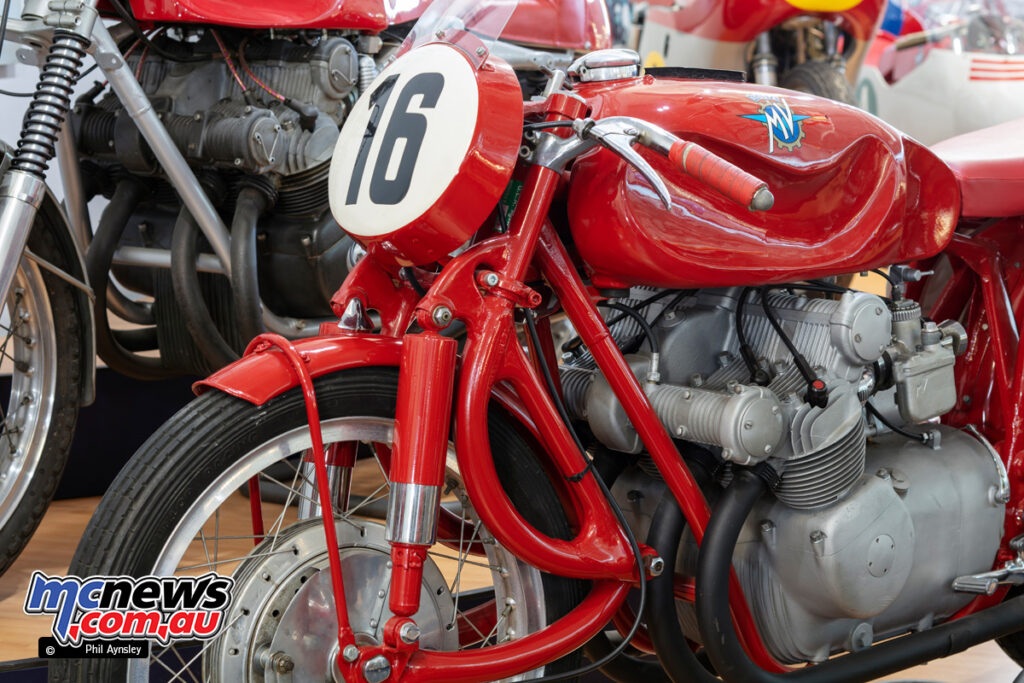 Helicopter engineering is also proudly on show throughout the museum.
Helicopter engineering is also proudly on show throughout the museum.
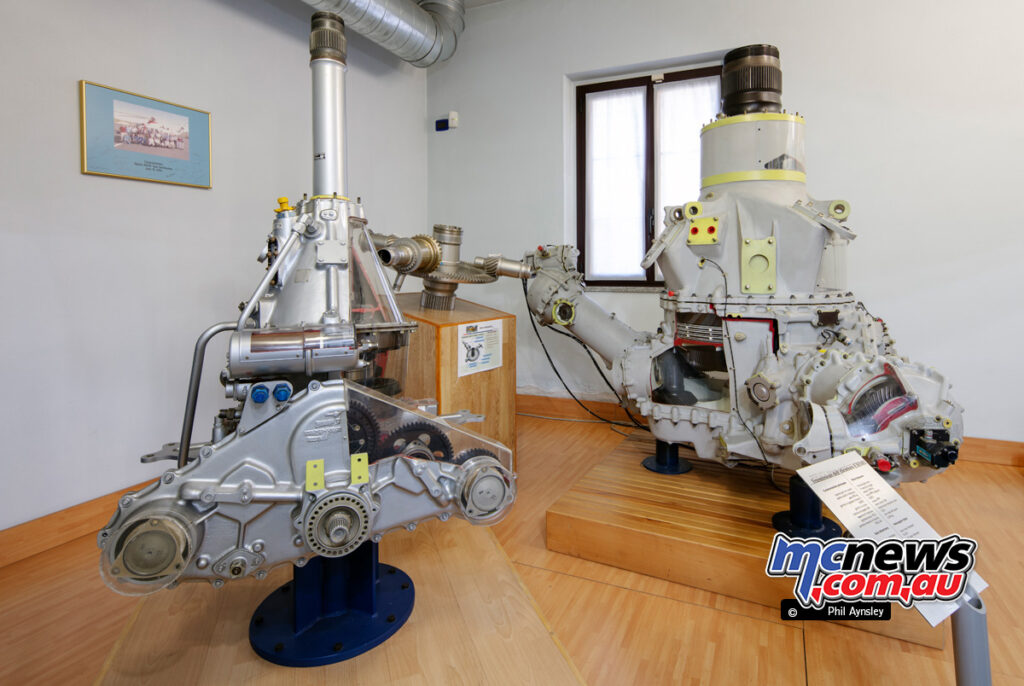
Two contemporaries – Agusta’s first (’58) in-house helicopter prototype, the A.103 and a 150 Rapido Sport. Count Agusta moved his aircraft manufacturing to Milan in 1923.
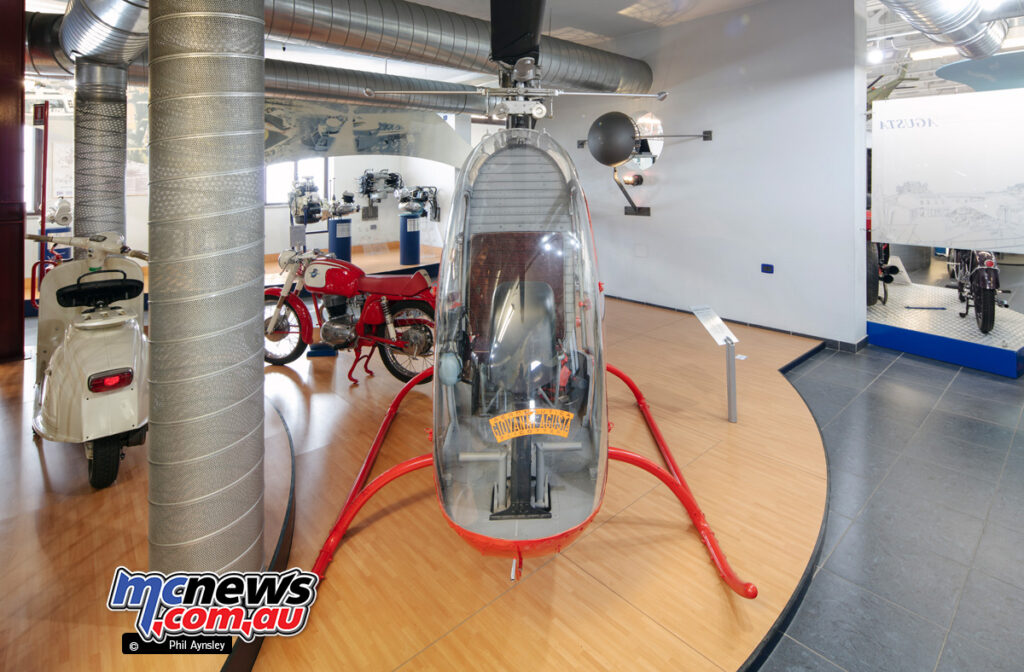
He began manufacturing the Bell 47 under licence in 1952 and helicopter production continues to this day. The 150.1cc RS was introduced in 1959 in response to the new law prohibiting bikes under 150cc from using the autostradas.
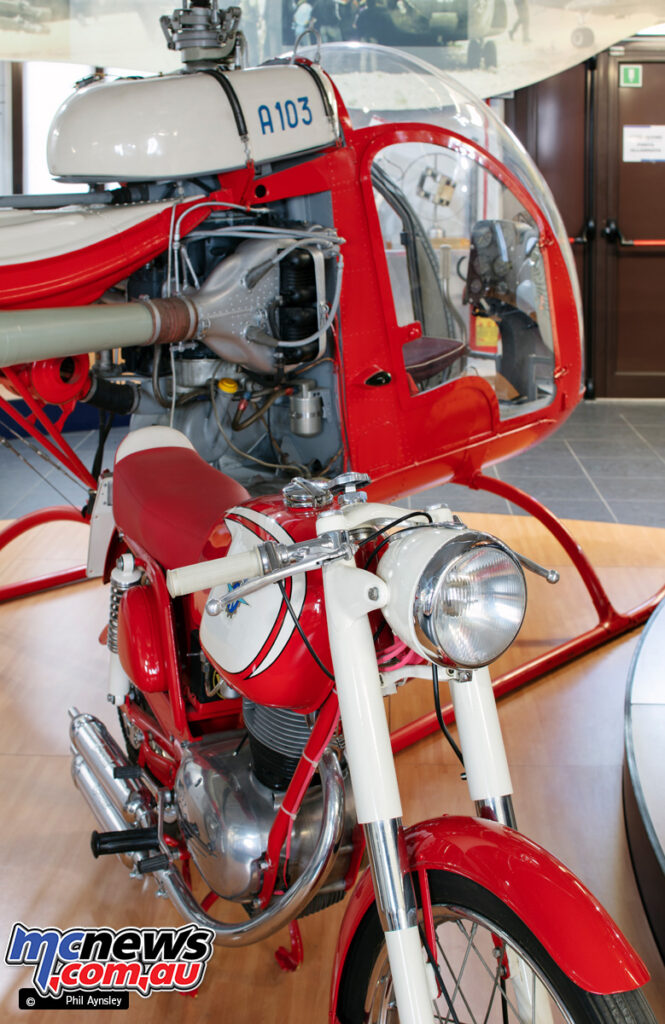
A one-off built to transfer guests from the dock to Count Aguata’s house in Portofino.
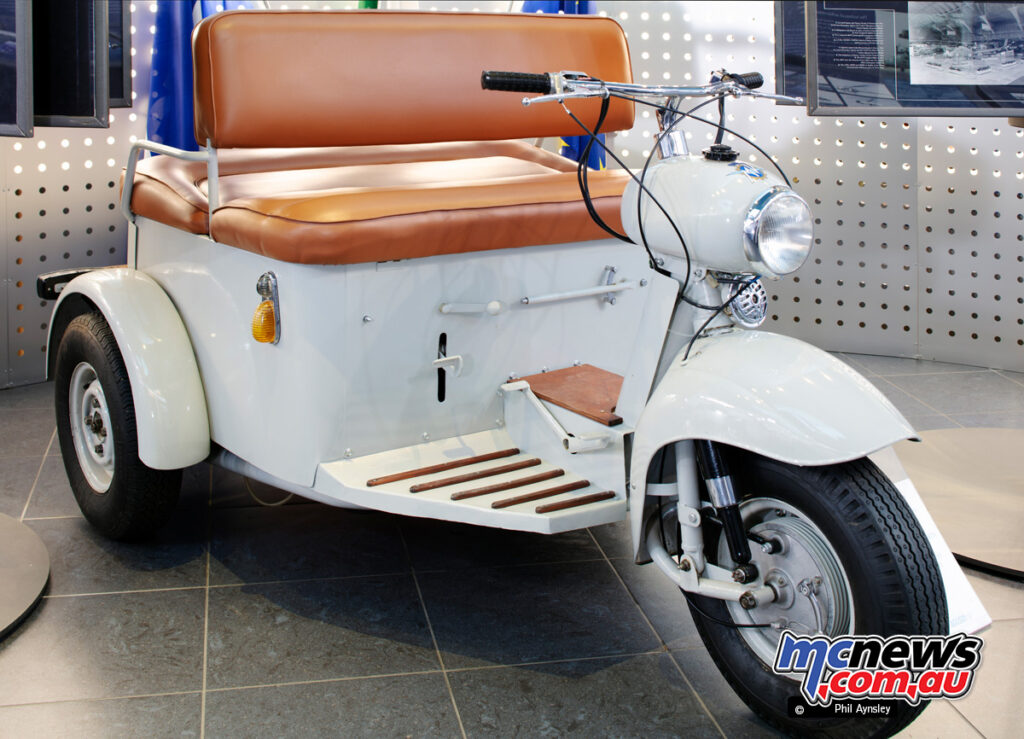
A 1967 250B. Like most Italian motorcycle manufactures police and military models played an important part in their range.
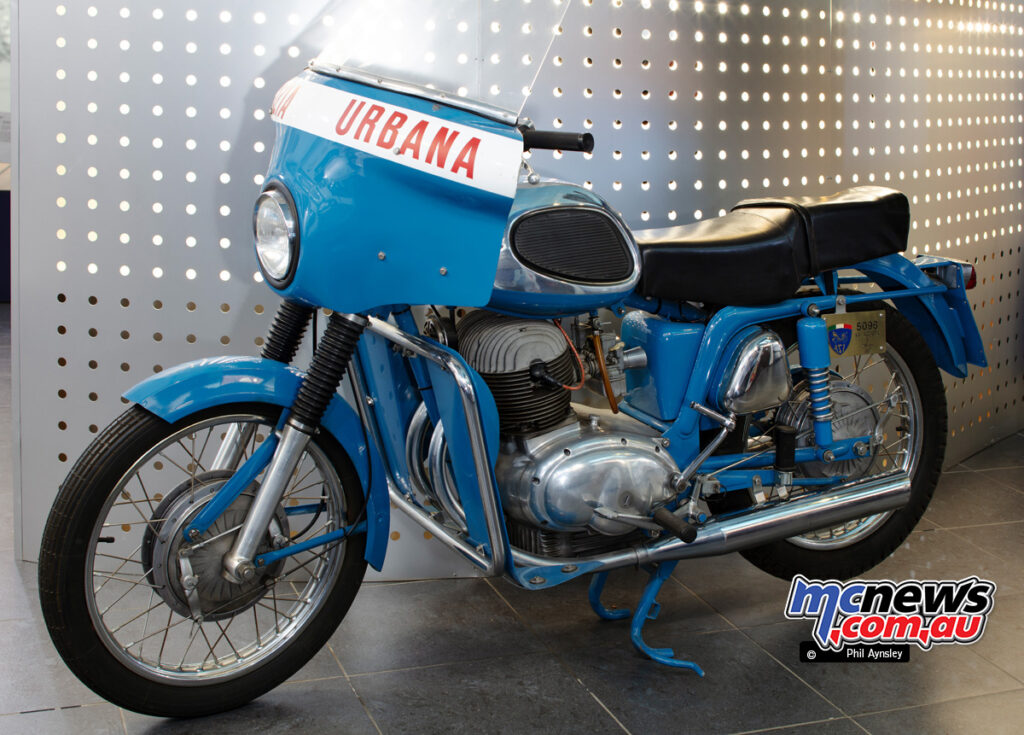
In 1945 Meccanica Verghera Agusta introduced its first motorcycle – the Vespa! The name was soon changed when it was discovered Piaggio had already registered it.
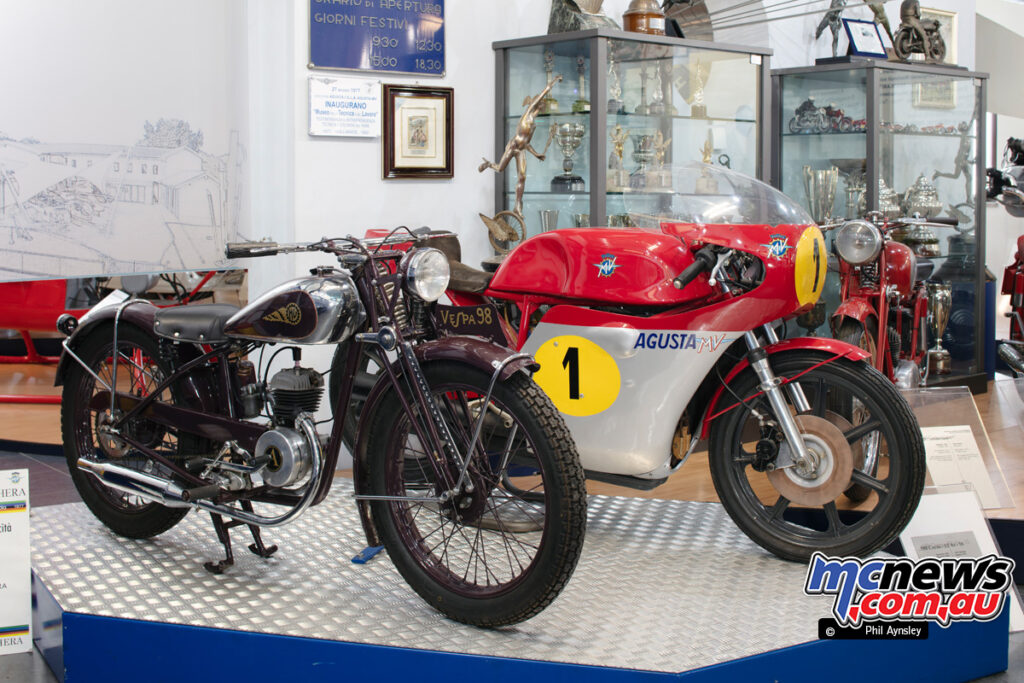
From then on it was simply called the 98. About 1700 of this basic 2-stroke single were produced up until 1948. Alongside is final classic racing design, the 1974 500/4.
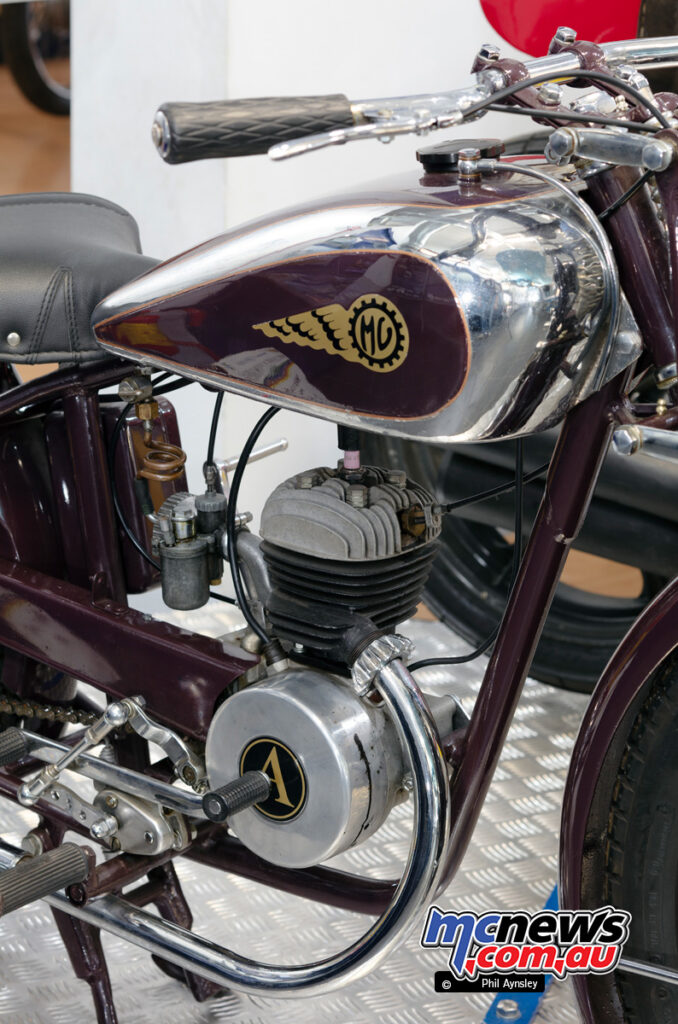
The first two road MV fours – separated by 15 years! Only this single, silver R19 500 was built and it debuted at the 1950 Milan Show.
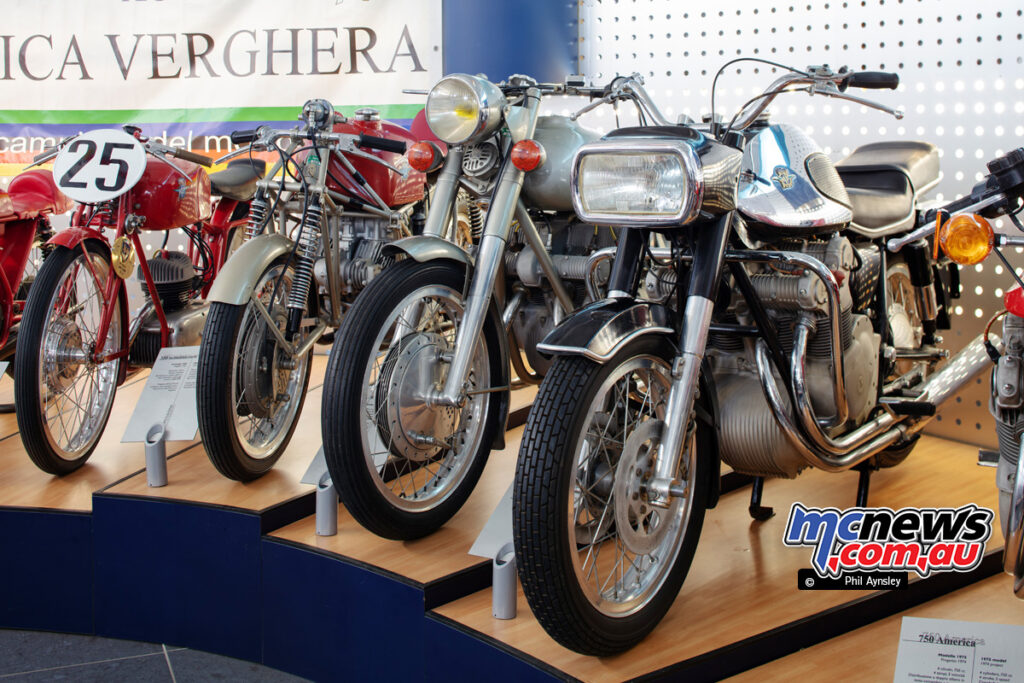
Many of the GP bike’s features were retained such as the double swingarm and shaft drive. It weighed just 155 kg and had a claimed 38-40 hp at 8,000 rpm. Top speed was 180 km/h. Mighty impressive figures for 1950! The 600 Four was the first MV four the (well heeled) public could buy. Only 127 were built.
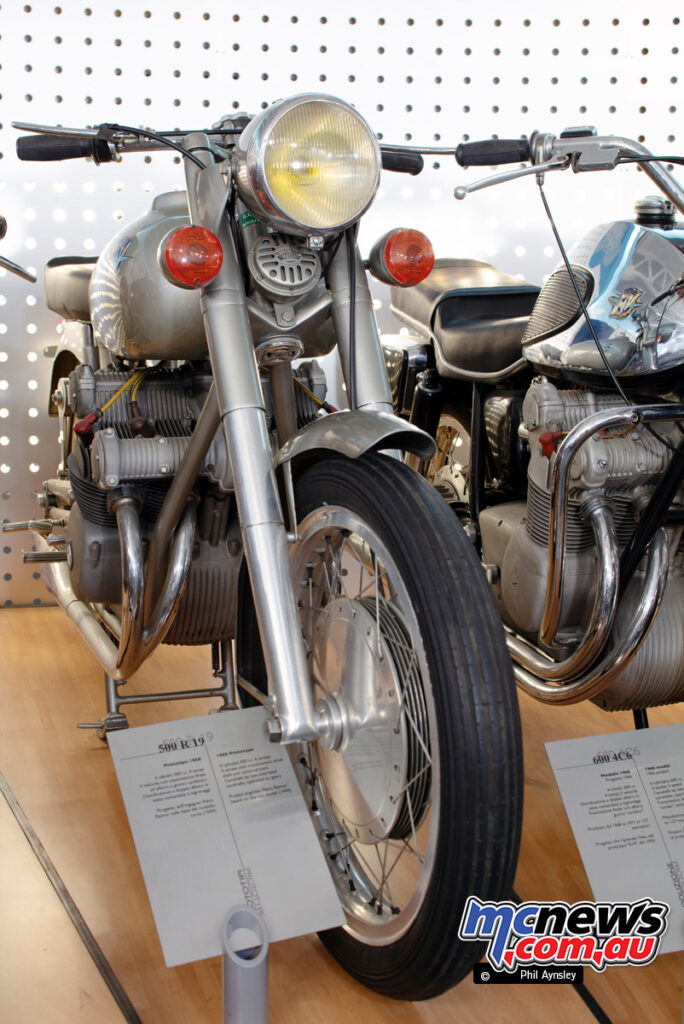
This sole 350 Bicilindrica Corsa was loosely based on the proposed 300B road bike (only a show bike was built, without engine internals).
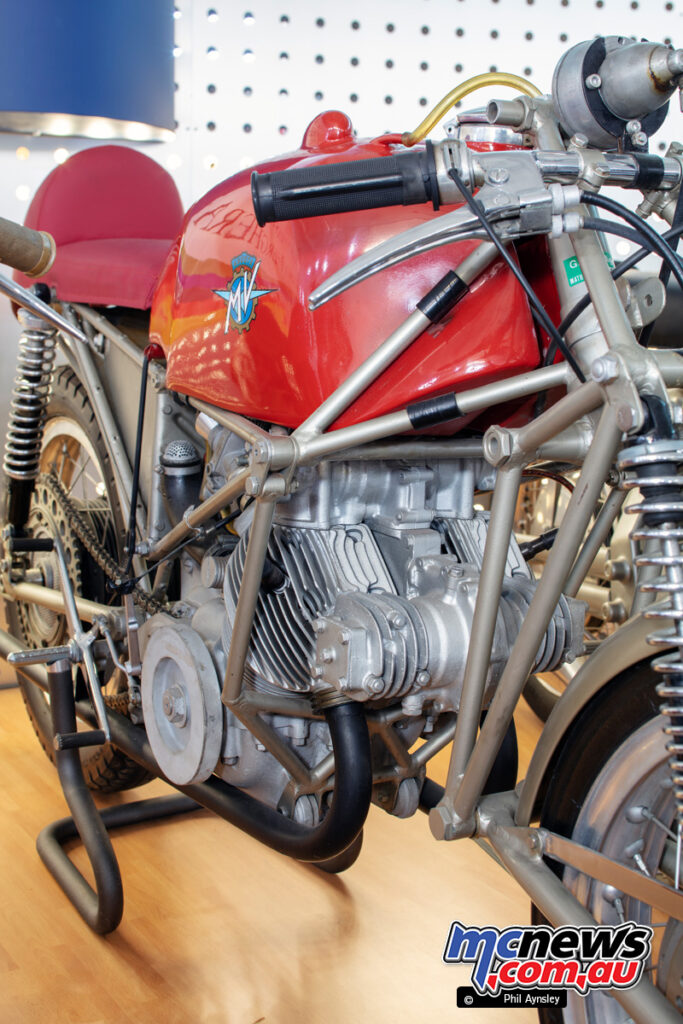
While the 300 used a high-cam/short pushrod design, the racer had a gear-driven DOHC set up. On the test bench the motor produced 46.5 hp at 12,000 rpm – not good enough to justify replacing the existing 350 racers.
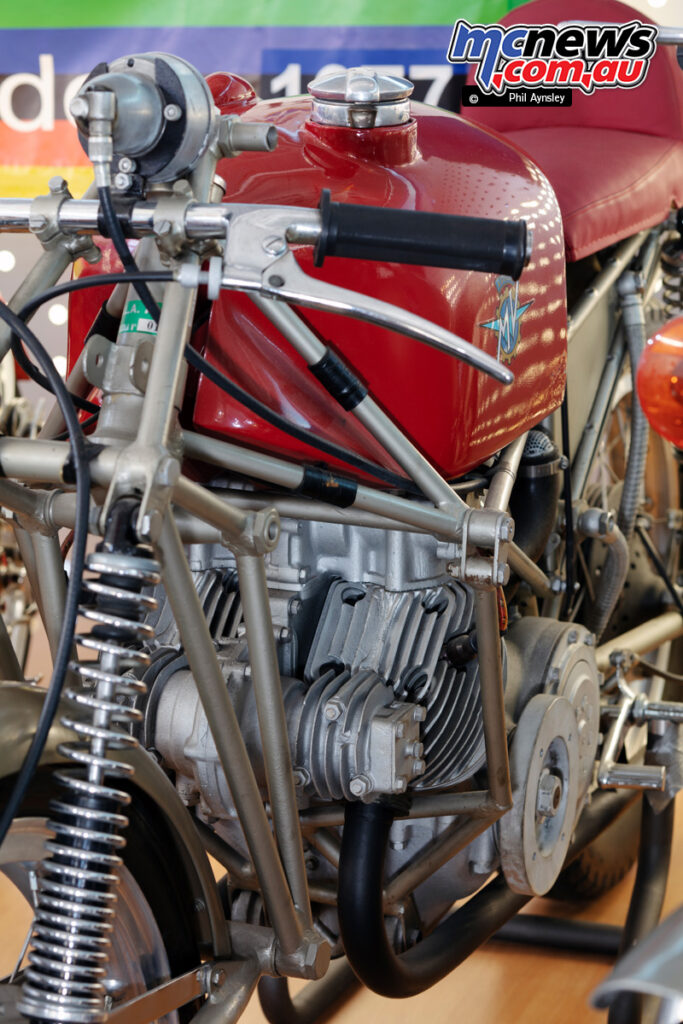
The 1963 125 cc disc-valve 2-stroke prototype. A seven-speed gearbox was fitted.
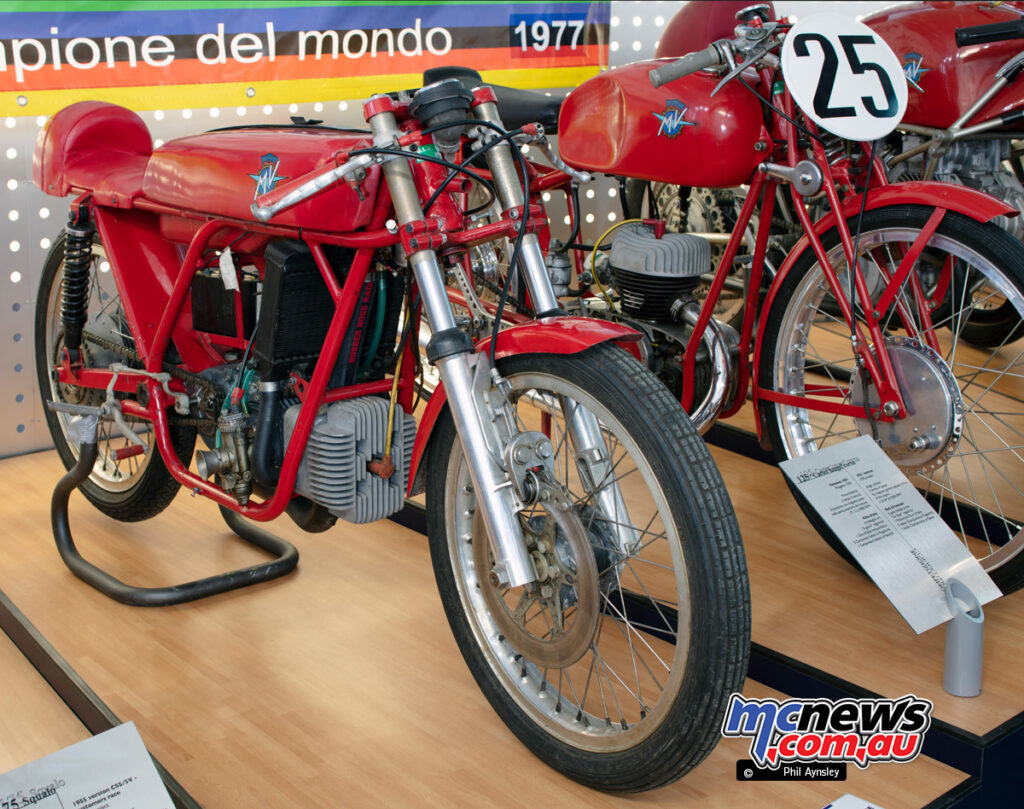
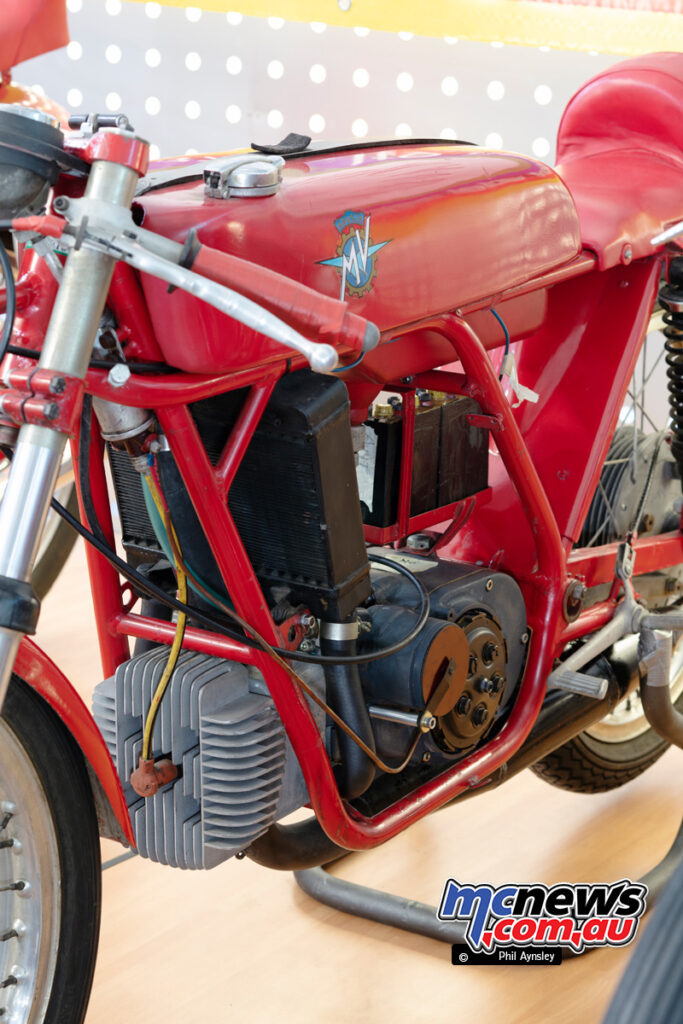
One of the two 500/6s built in 1957. The other can be seen here – The six-cylinder MV Agusta 500 Grand Prix racer of 1957.
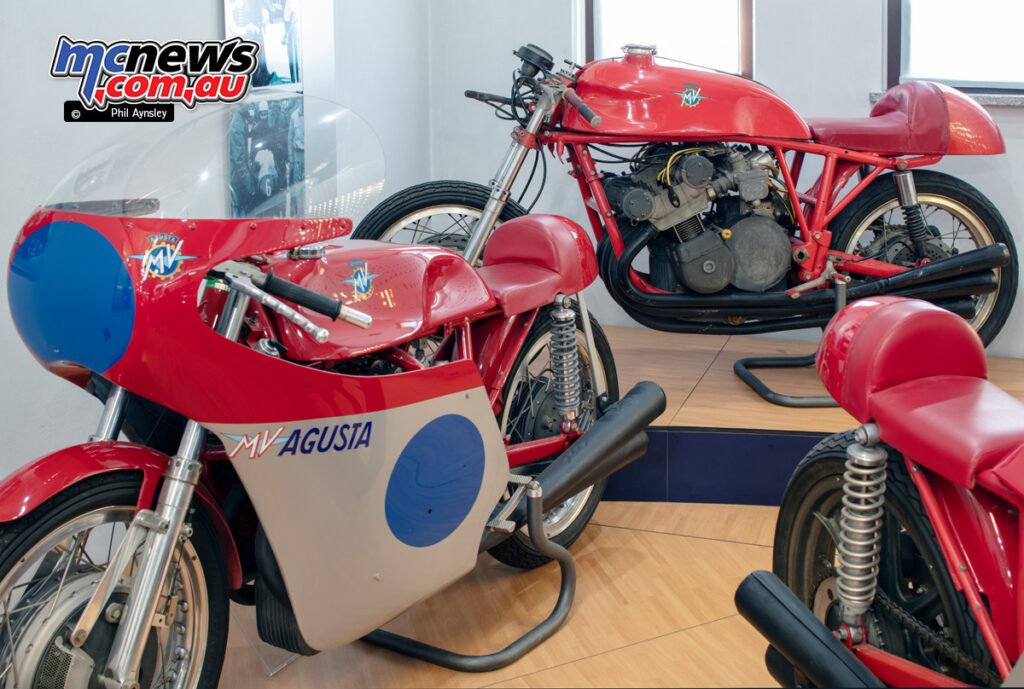
Two of the 500cc GP bikes on display. On the left a 1973 four. Alberto Pagani scored the 500/4’s final victory at Austria (not a GP) in September 1973. Agostini won the design’s first at Modena in ’66. On the right a 1965 four. Les Graham won this design’s first race at Monza in ’52. Agostini its last in ’66.
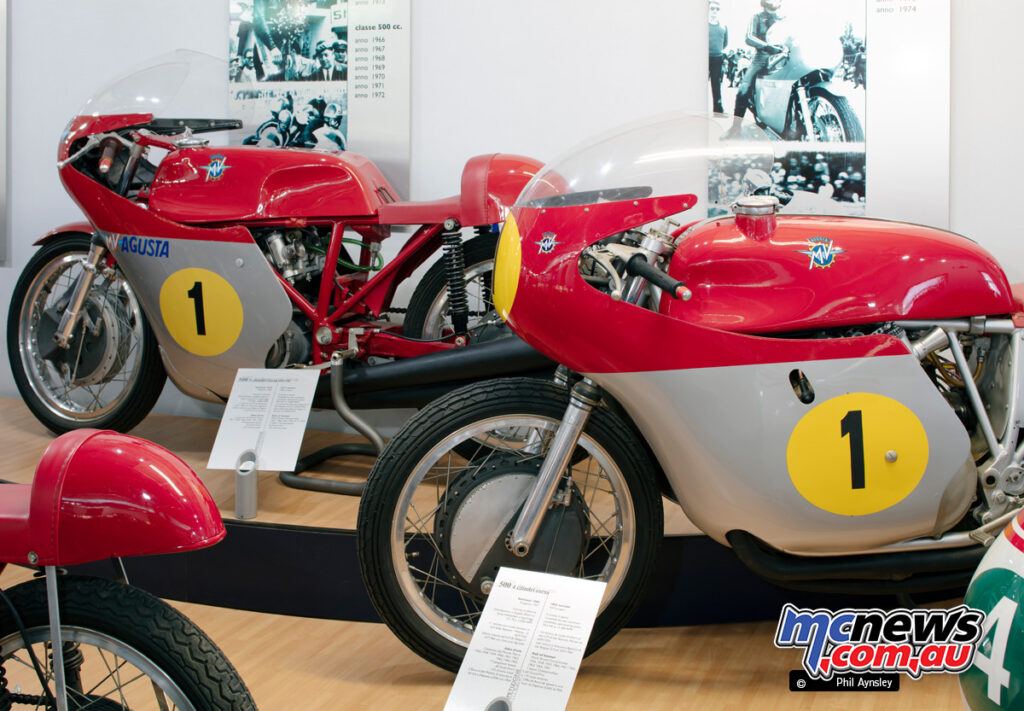
The 1964 250 Bicilindrica featured a motor that was basically two 125cc singles siamesed together. It won two World Championships, in 1956 and 1958.
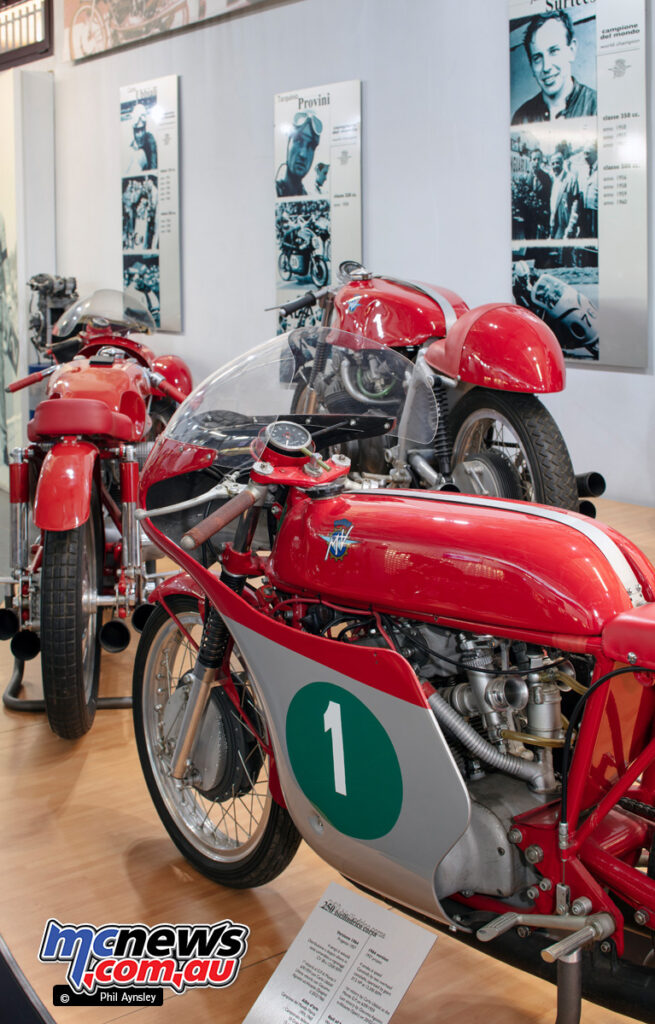
A very small number of the trophies won by MV riders, including a IoM TT trophy.
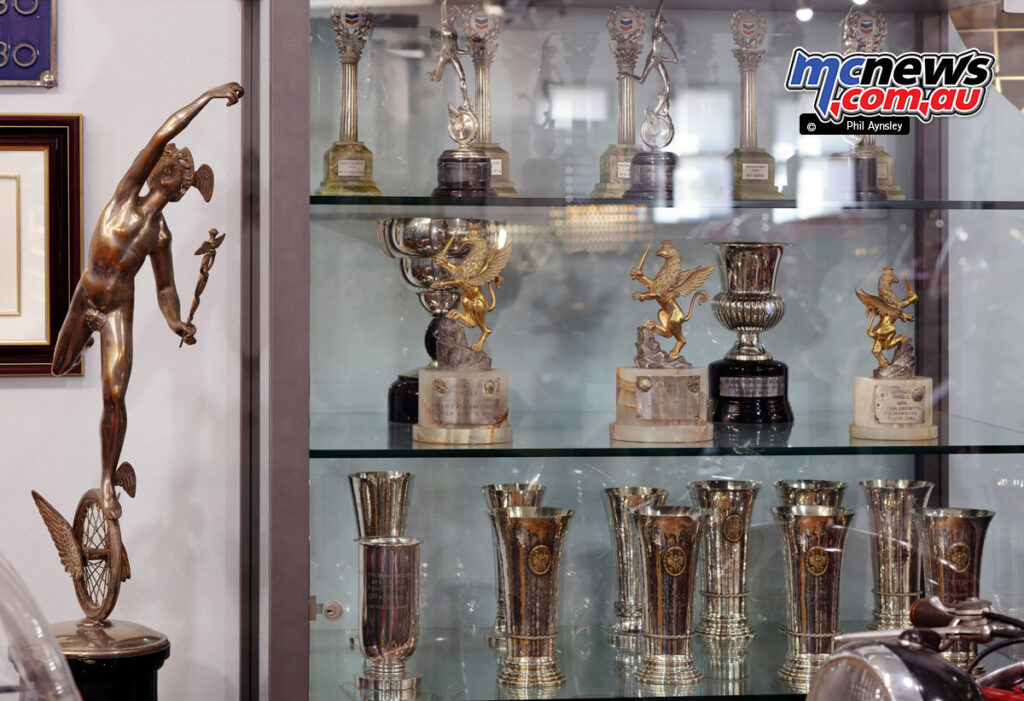
A 1955 175 CSS in front of some of the GP bikes.
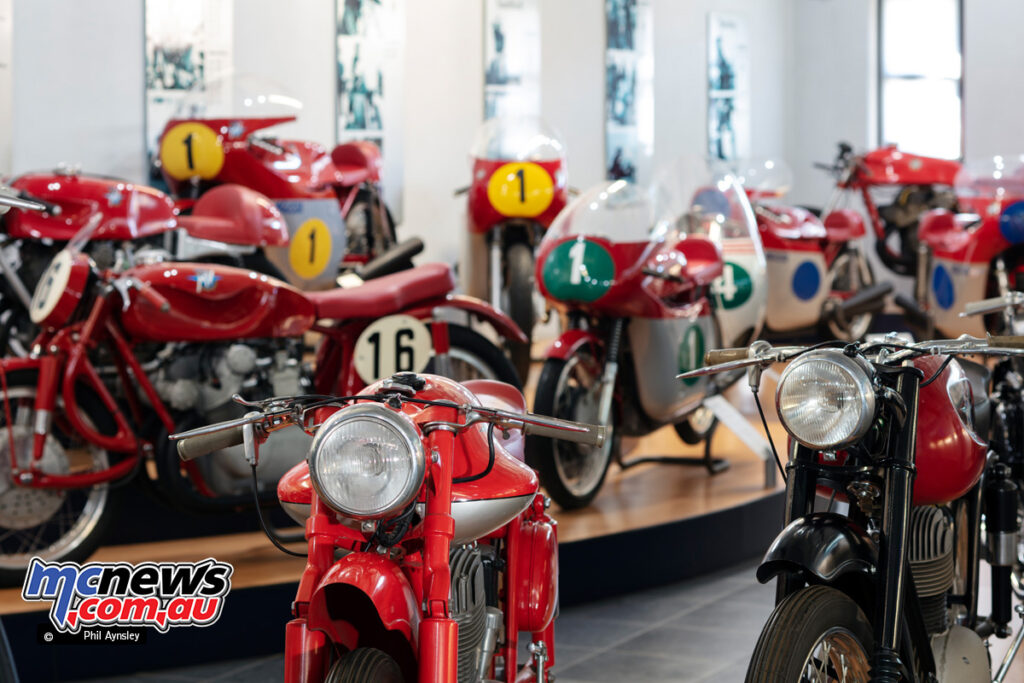
The four-wheel Vetturetta prototype from 1951 was powered by a 350 cc 4-stroke motor.
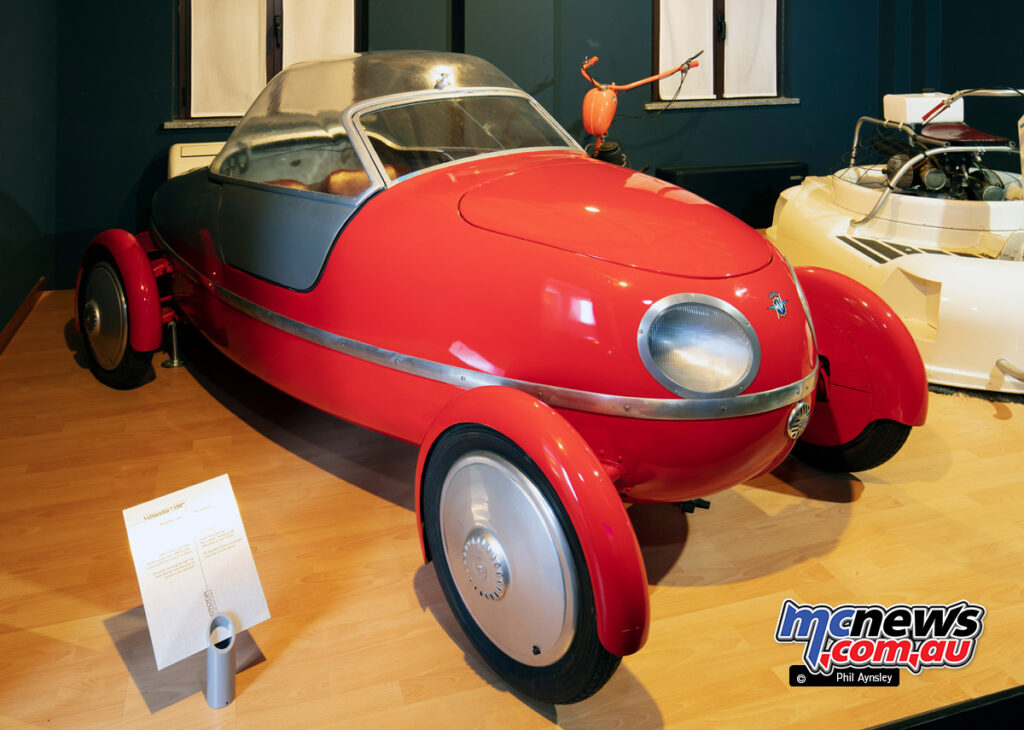
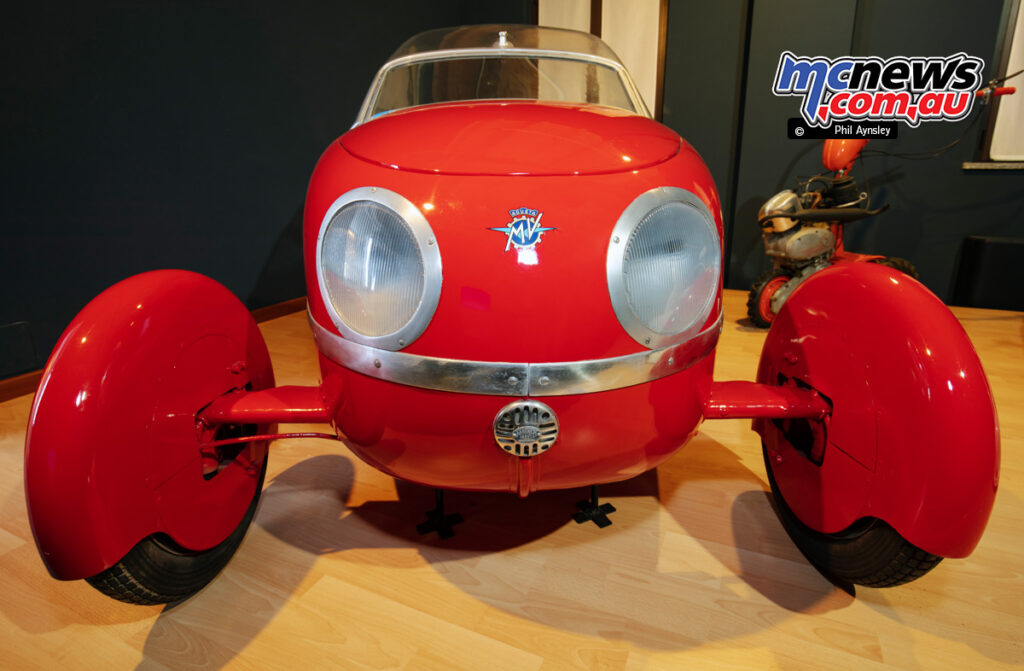 The 1969 Overcraft (hovercraft) prototype used a 300 cc 2-stroke motor.
The 1969 Overcraft (hovercraft) prototype used a 300 cc 2-stroke motor.
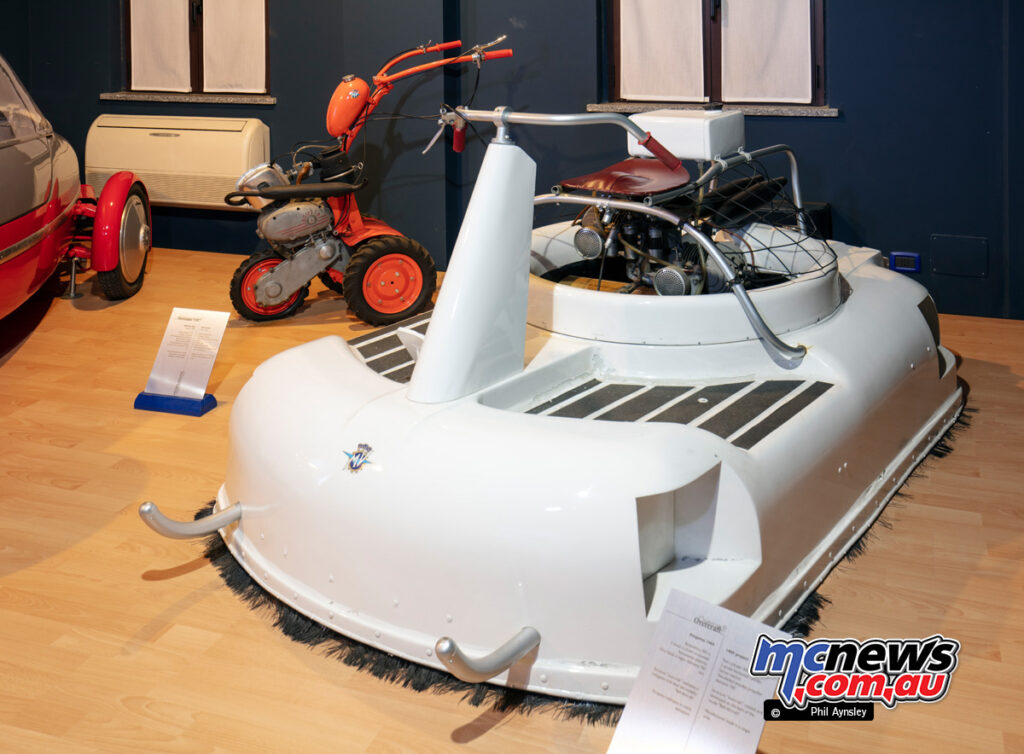
Certainly one of the rarest MV Agustas ever produced! One of the 50 1962 Motozappa 188 70 cc tiling machines built.
